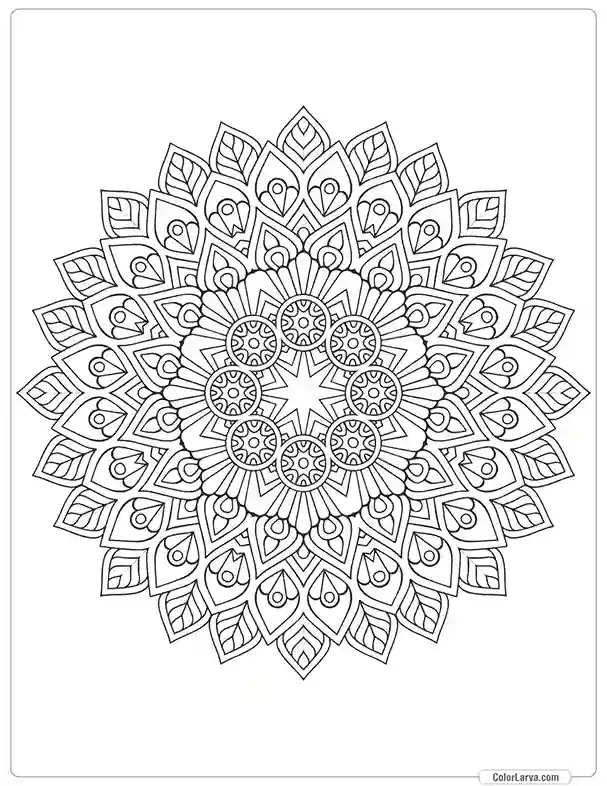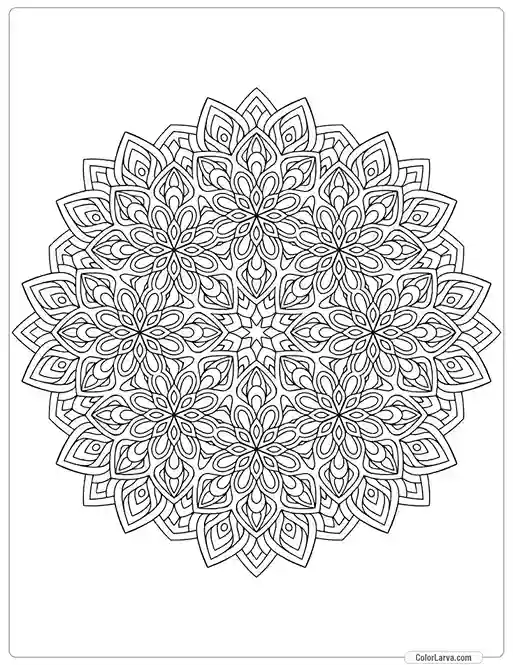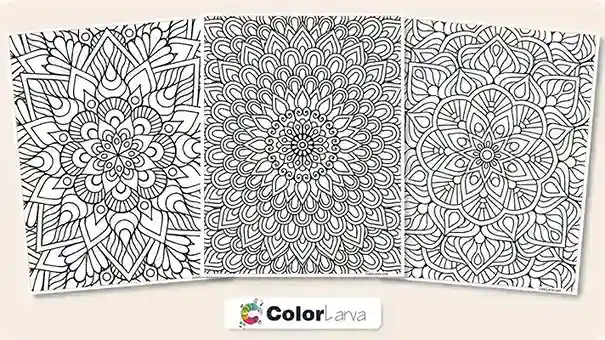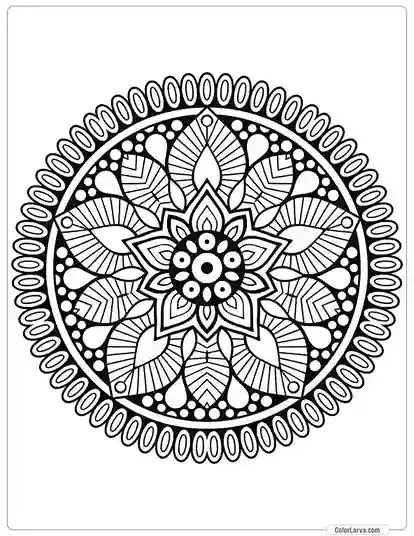Many people see coloring as a simple hobby, a pastime that’s mostly for kids or those who are young at heart. But what if we told you that coloring isn’t just for kids, nor is it merely a way to pass the time? In fact, sitting down with a set of colored pencils and immersing yourself in the intricate patterns of mandalas can offer immense benefits for adults.
Coloring mandalas—those beautiful, complex designs made up of concentric circles and shapes—can be especially helpful in calming the mind and unleashing your creative potential. If you’re looking to tap into these benefits, you’ve come to the right place. Read on for some valuable tips and tricks on how to color mandalas effectively!
What is a Mandala?
Mandalas are much more than just geometric patterns or shapes to fill in with color. With origins in Hinduism and Buddhism, mandalas have long served as sacred symbols representing wholeness, harmony, and the infinite nature of the universe. The word “mandala” itself comes from the ancient Sanskrit language and means “circle.”
However, mandalas are not exclusive to any single religion or culture. Many other traditions also feature symbols reminiscent of mandalas. For example, Native American dream catchers, Celtic crosses, and the circular stained-glass windows in Christian cathedrals all have repeating patterns that radiate from a central point.
What Are the Benefits of Coloring Mandalas?
Coloring mandalas is more than just an enjoyable activity—it’s a practice with numerous mental and emotional benefits. Here are some of the key advantages:
1. Stress Relief: Mandalas require focus and stillness, making them a powerful tool for stress relief. As you concentrate on the intricate patterns, your mind naturally begins to relax, allowing you to release tension and reduce anxiety.
2. Art Therapy: The famous psychoanalyst Carl Jung was one of the first to explore the psychological effects of mandalas in the early 20th century. He believed that mandalas represented the whole self, and that creating or coloring them could help unlock unconscious thoughts and emotions. This makes mandalas an effective tool in art therapy, particularly for those dealing with trauma or emotional conflict.
3. Pain Management: Coloring mandalas has been shown to have therapeutic effects for people suffering from conditions such as PTSD, dementia, and chronic pain. The act of coloring engages both the left and right hemispheres of the brain, promoting a sense of balance and well-being.
4. Meditation: While traditional meditation often involves sitting in silence, coloring mandalas can be a form of moving meditation. As you focus on filling in each pattern and layer, you enter a meditative state that helps quiet the mind and center your thoughts.
How to Color a Mandala
Now that you understand the benefits of mandalas, let’s dive into the fun part—coloring them! While there’s no “right” or “wrong” way to color a mandala, here are some tips to help you create a beautiful and satisfying final piece:
1. Choose Your Colors:
The first step in coloring a mandala is selecting your color palette. While it can be tempting to use as many colors as possible, sometimes less is more. Limiting your color choices can create a more balanced and harmonious design.
- Know Your Color Theory: Understanding the basics of color theory can help you choose complementary colors that work well together. The color wheel divides the spectrum into primary, secondary, and tertiary colors, which can be combined in various ways to create different effects.
- Use a Color Palette Generator: If you’re unsure which colors to choose, there are plenty of online tools available, such as Coolors.co or Colourlovers.com, that can help you generate beautiful color palettes.
- Turn to Nature: When in doubt, look to nature for inspiration. Whether it’s the colors of a sunset, a flower garden, or a forest, nature offers an endless source of beautiful color combinations.
2. Start from the Center:
One popular method for coloring mandalas is to start from the center and work your way outward. This approach allows the beauty of the mandala to radiate from the epicenter, creating a sense of growth and expansion.
3. Try Coloring from the Outside In:
Alternatively, you can begin coloring from the outer edges and work your way inward. This technique can be particularly effective for meditation, as it mirrors the process of peeling away layers of thought and worry to focus on the present moment.
4. Work by Sections:
Many mandalas are divided into symmetrical sections, which can be colored separately. Experiment with different color combinations in each section to see what works best for you.
5. Don’t Be Afraid of White Space:
Not every part of the mandala needs to be filled with color. Leaving some areas white can create a sense of openness and freedom, allowing the mandala to “breathe.”
6. Experiment with Different Coloring Tools:
While colored pencils and markers are popular choices, don’t be afraid to experiment with other mediums such as gel pens, watercolors, or pastels. Each tool offers a different texture and effect, allowing you to create a truly unique mandala.
7. Let Your Instincts Guide You:
Sometimes the best approach is simply to start coloring and see where your instincts take you. Choose a color that speaks to you and let the rest of the design flow naturally from there.
Final Thoughts
Coloring mandalas is one of the best ways to slow down and savor life’s complexities. It’s a form of creative expression that allows you to explore your inner self and find peace in the process. Remember, the beauty of coloring mandalas lies not just in the final product, but in the journey of creating it.
So why not grab your favorite coloring tools and dive into the world of mandalas today? At ColorLarva, we offer a vast collection of free, high-quality mandala coloring pages that you can easily download and print. Whether you’re looking for a simple design to relax with or a more intricate pattern to challenge your creativity, ColorLarva has something for everyone.
ColorLarva is not just a place to find mandalas; we also have a huge variety of other coloring pages for both kids and adults. From Unicorn Coloring Pages to Mermaid Coloring Pages and Easter Coloring Pages, you’ll find a wide range of themes to suit your interests. Simply select your desired category, click on the image you like, and download the printable PDF to start coloring right away.
So, what are you waiting for? Explore our collection, and may the magic of the mandala be with you!
We’d love to hear about your favorite techniques for coloring mandalas. Feel free to share your thoughts in the comments below!






















